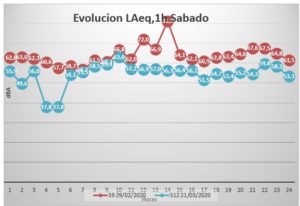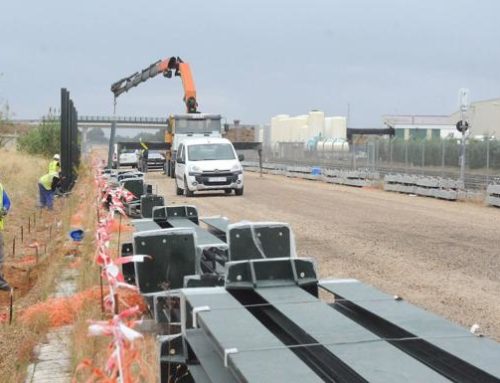The continuous monitoring that Acusttel has been carrying out in the city of Castellón, Tascas area, shows a significant decrease in noise levels.
This decrease can reach up to 20 dB (A) after the application of the confinement measures for protection against Covid-19.
The sound of birds, the sound of rain on the asphalt or the sound of our own steps on a cobbled street, are auditory realities difficult, if not impossible, to enjoy in our cities. Present day has shown us the most denatured face of our urban environment, the false realm of silence produced by a dramatic situation for society that, although it has generated a very considerable improvement in our levels of noise pollution, these same levels could result, which paradox, claustrophobic.
After the declaration of the state of alarm on March 15, 2020, causing the population to be confined to their homes, in order to tackle the COVID-19 pandemic, there has been a significant change in the acoustic panorama of our cities.
Acusttel within its noise pollution control service for the Castellón City Council, noise monitoring of the leisure area called Zona Tascas, has been continuously recording noise levels since last february.

As an example, we used the ZAS1 measurement point for the analysis, which is located at Carrer Major intersection with Carrer Isaac Peral. This monitor is registering the noise levels produced in the urban environment with a significant number of leisure establishments.
Noise levels have been reduced to 20 dB (A) during daytime
If we compare the results obtained on Saturday, February 29, 2020, corresponding to week 9 of the year, before confinement, with the results of Saturday, March 21, 2020, corresponding to week 12 and after a week of confinement, we obtain the following results.

As can be seen in the graph, at times of maximum influx of people to this traditional leisure area, around two in the afternoon and between 8:00 p.m. and 11:00 p.m., there has been a decrease with the cessation of all activity in more 20 dB (A) for the first case and around 10 dB (A) for the late-night period.
The paralysis of leisure activity and the lack of people on the streets of our cities generates a much higher noise reduction than that produced by the decrease in urban traffic
These data are helping acoustic consultants to establish minimum background noise levels, in the total absence of activity in the cities, which so far we have never been able to record.
Obviously, these current noise levels cannot be taken as a reference target value, but can be used to draw large conclusions from them. As we indicated at the beginning, the current situation cannot be an objective in itself given its unnatural nature, we do not want to live in very bustling cities but we also do not want to live in cities with current noise levels, they denote sadness and are not pleased to anybody.
We understand that, as the conditions of the confinement will be modified, and different activities will be gradually allowed, we will be able to record their impact on the acoustic panorama of the city.
This type of analysis is unprecedented since it is impossible to determine, except with acoustic prediction models, the noise levels in 24-hour periods continuously. For this reason, carrying out a real study such as the one being carried out at this time will allow us to draw many conclusions for the future.
As citizens, we cannot be happy with the experience we are registering, but as technicians, we must try to take advantage of what current circumstances can bring us to improve knowledge of noise in cities.

At Acusttel, we continue working to improve the acoustic panorama of our cities, trying to respond to the noise inconveniences.



